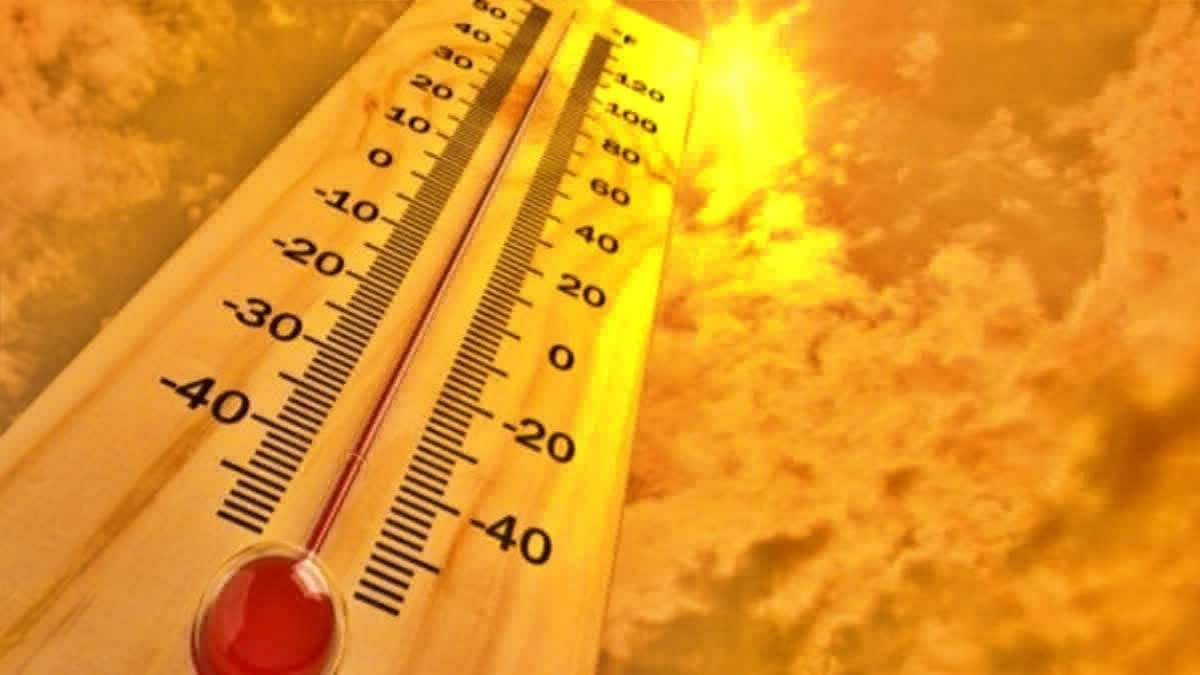Hyderabad: A new research says the past 12 months have been the hottest ever recorded on earth which is experiencing rapid climate change, precipitated by the burning of fossil fuels and other human activities despite big climate action talks.
Climate Central, an organisation manned by an independent group of scientists and communicators, who research and report the facts about the changing climate using big data and high-end technology, in its study, says the earth has experienced more heat, 1.3°C above the pre-industrial climate during the time.
The study also warns that temperatures will continue to increase and extreme weather will get worse until world leaders act to end net greenhouse gas emissions. It further says with the current set of policies, temperature will continue to rise making the planet the hottest it has been for over 3 million years.
Through its peer-reviewed attribution mechanism, the report quantifies the influence of climate change on temperatures in different locations across the world during the past 12 months.
key global findings
According to the findings, trends recorded from November 2022 to October 2023, considered as the hottest in 12 consecutive months ever recorded are very consistent with the long-term global warming trend. Global Mean Temperature (GMT) was around 1.3°C hotter than the pre-industrial climate.
Another startling fact reveals one in four people worldwide (1.9 billion people) faced extreme and dangerous heatwaves driven by climate change over the last 12 months. Over the year, 90% of people experienced at least 10 days of high temperatures that climate change made significantly more likely.
El Niño and reductions in shipping pollution, along with other factors, have likely had a small influence on increasing temperatures over the last 12 months though it is very small compared with the influence of human-caused greenhouse gas emissions.
The report says high temperatures over the mentioned period resulted in record-breaking extreme weather events across the globe. The world is currently on track to produce 110% more fossil fuels by 2030 than would be consistent with limiting warming to 1.5°C, and 69% more than consistent with 2°C, according to the Production Gap report recently published. The oversupply of fossil fuels will worsen extreme weather and continue to increase temperatures around the world.
Climate change forced by humans impacted large parts of South America, with the entire continent becoming much warmer than normal for at least the first six months of the year, it says. To substantiate their point, researchers in the paper say drought in Argentina led to an estimated 3% GDP reduction, while in the Amazon River region, the water level reached its lowest point ever recorded, affecting water and food distribution to half a million people in October alone. In the Panama Canal, which operates an estimated 5% of global trade, the 2-year-long drought disrupted the world’s busiest trade passage for months.
US faces climate change brunt
In the US, 24 extreme weather events killed at least 373 people and led to financial losses exceeding U$67 billion to date. As many as 93 died in what is now considered the deadliest US fire of the century in Hawaii. In Canada, one out of every 200 people were forced to evacuate their homes due to wildfires that burnt over 45 million acres and lasted for months.
Heatwaves that breached the human survivability threshold stretched from East and South Asia to Europe and North Africa, killing at least 264 people in India and over 2,000 people in Spain, at a time when parts of the country also faced their driest period in 500 years. In Italy, as temperatures surpassed 40°C in August and September, hospitals were unable to accommodate the number of people seeking care for heat-related illnesses, with Covid-era admission levels reported in emergency units.
Human-induced climate change brought record rainfall, increasing the severity and frequency of fatal flooding events. Across the world, millions were displaced with thousands killed in storms that included New Zealand during Cyclone Gabrielle, in Malawi, Mozambique and Madagascar during Cyclone Freddy, China during Typhoon Haikui and Libya, Greece, Bulgaria and Turkey during Storm Daniel - Africa’s deadliest storm ever with over 4,000 victims.
Africa fares no better
A recent investigation shows that extreme weather has killed at least 15,700 people in Africa this year so far. In April, unprecedented flooding in Rwanda and the Democratic Republic of the Congo killed over 400 people; by September, flooding washed away farmlands in Ghana and displaced nearly 26,000 people – most of whom are women and children. Meanwhile, the drought in the Horn of Africa continues to make new victims, having left over 23 million people acutely food insecure while displacing another 2.7 million.
The India scenario
As many as 70 cities analysed across 32 states and union territories reveals the danger. Twelve cities experienced more than 100 days last year with CSI index score of 5.
These cities include Bengaluru (124), Visakhapatnam (109), Thane (101), Guwahati (112), Thiruvananthapuram (187), Aizawl (100), Imphal (139), Shillong (123), Port Blair (205), Panaji (108), Dispur (112), Kavaratti (190)
There are 21 cities in India which experienced more than 100 days last year with CSI index score of 3. Cities which fall under the category are Mumbai (134), Bengaluru (148), Chennai (121), Visakhapatnam (155), Thane (143), Kalyan (129), Guwahati (180), Vijaywada (106), Mysuru (118), Bhubaneswar (107), Thiruvananthapuram (242), Agartala (107), Aizawl (147), Imphal (209), Shillong (204), Port Blair (257), Kohima (150), Panaji (177), Daman (110), Dispur (180) and Kavaratti (241).
Also read: Climate change may make India, other Asian countries too hot for up to 2.2 billion: Study



